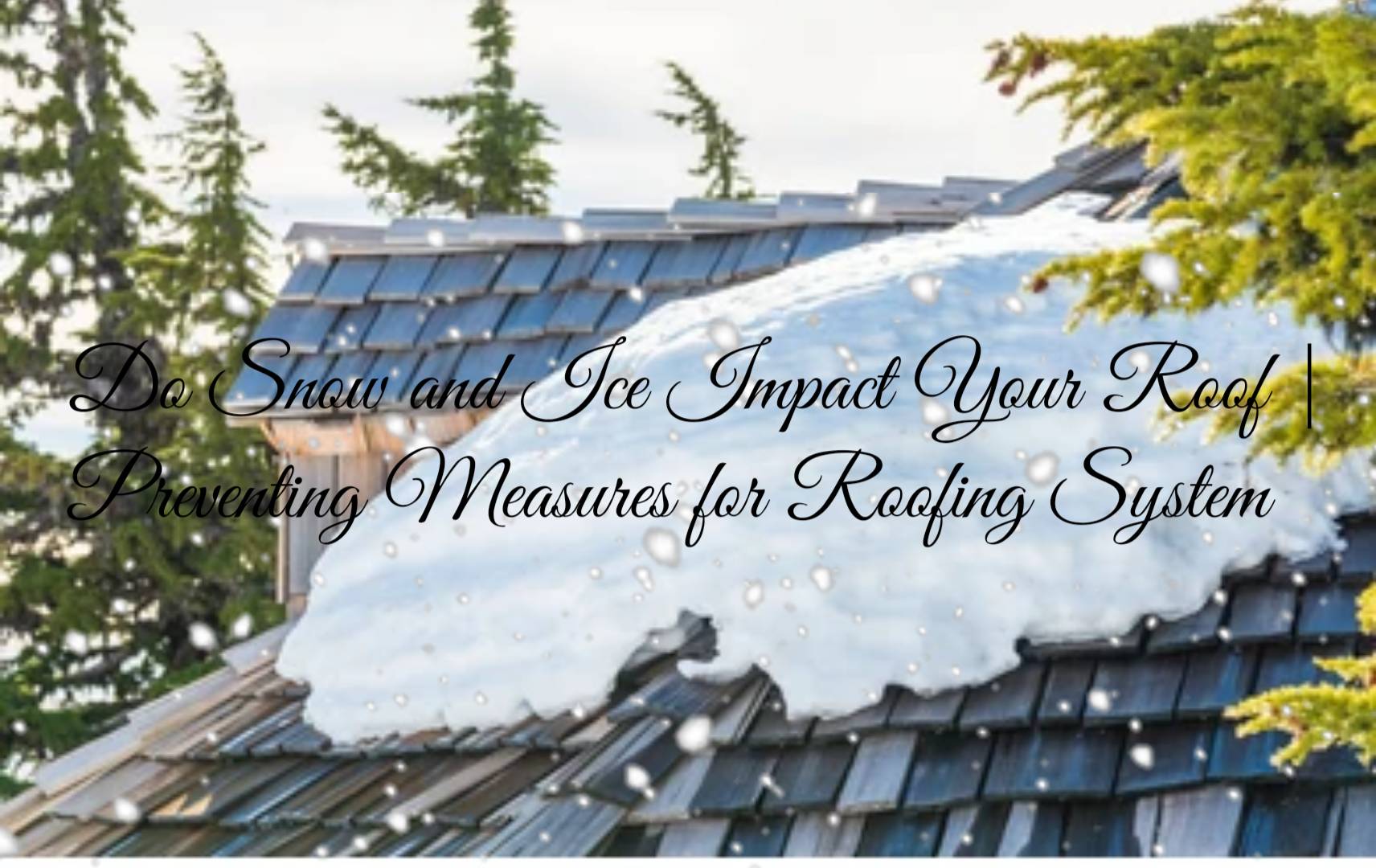Winters are harsh and heavy snowfall during it can cause structural damage to your roofing. Roofing helps in protecting you from these drastic climatic conditions. However, snow and ice buildup can reduce lifespan and functionality; quick preventive measures are needed to address these problems.
Table of Contents
Issues Caused by Snow and Ice on Roof
Heavy snowfall can lead to various problems and potential damage to your roofing. Here are some of the common problems associated with them:
Excess Weight:
Due to its moisture content, Snow can weigh about 30 pounds per cubic foot. In extreme cases, this weight has caused roofs to collapse.
Accumulated snow significantly increases the load on the roof structure which exceeds its bearing capacity and leads to potential structural damage.
Ice Daming:
Ice dams are formed when snow melts on the roof and refreezes at the margins or in the gutters. Water may collect on the roof as a result of it preventing appropriate drainage. Afterwards, the trapped water may seep into tiny gaps and crevices, harming the overall roof’s structural integrity. According to IBHS, ice dams cause billions of dollars worth of damage to property yearly.
Roof Leaks:
The melting snow and ice dams could cause water to seep through the roof. This could lead to leaks, which if you don’t quickly fix could damage the inside walls, ceilings, and possibly even the foundation of your house.
Gutter Damage:
Water must be directed away from the roof and foundation via gutters. Snow and ice build-up can damage drains and interfere with their capacity to efficiently direct water. This can result in overflow and contribute to the formation of ice dams.
Gutters may become detached or sag due to the weight of snow and ice in them. Ice dams can also block the pipes and increase the possibility of roof and property damage.
Inefficient Insulation:
Snow accumulation works as an insulator, limiting the attic’s natural ventilation. This may increase heat loss and lower the house’s energy efficiency.
Algae Growth:
Leaks in the roof can produce moisture, which may promote the growth of mould and algae. This may have an impact on indoor air quality and provide health risks.
Roof Material Stress:
Repetitive cycles of freezing and thawing can induce roofing materials to expand and contract, placing stress on the roof structure. This prolonged stress contributes to the deterioration of several roofing components over time.
Materials used in asphalt roofing are especially susceptible to degradation from these freeze-thaw phases. This susceptibility can lead to cracks and the need for premature roof replacement.
Preventing Measures for Snow on Your Roof:
Protecting your roof from ice and snow is crucial to prevent damage and ensure the safety of your home:
Snow Removal:
The IBHS recommends that homeowners remove snow promptly after each significant fall, especially if its depth exceeds 6 inches. Removing snow from your roof safely helps reduce the chance of having too much weight on it. To remove the snow, use a snow rake or employ experts, and be careful not to break the roofing material.
Ice Dam Prevention:
Proper insulation and ventilation in the roof can reduce the risk of ice dam formation. Install heating cables along the roof’s edges to melt the snow and ice. It allows water to drain effectively and aids in temperature regulation.
Clear Drainage:
To avoid accumulation of debris, FEMA recommends gutter guard installation and routine cleaning for homeowners. Water must be diverted away from the roof and foundation by properly operating drainage. Clear away any ice accumulation, leaves, and debris that could impede the water’s movement.
Roof Inspection:
Routine inspections from Norwich roofer lower the chance of significant damage by identifying issues early. Look for the areas of leakage in your roof and seal them immediately. Quickly fix damage indicators, such as missing or broken shingles. Ensure the flashing surrounding vents and chimneys are secure to stop water seepage.
Professional Assistance:
90% of roofing experts advise employing a certified contractor for roof inspections and snow removal. Roofing specialists can evaluate your roof’s state, spot possible problems, and suggest workable options. Experts are also capable of properly removing ice and snow off roofs without harming them.
Tree Trimming:
Trim overhanging branches to prevent them from accumulating snow and ice on the roof. Falling branches can also cause damage during winter storms.
Roofing Materials that can Withstand Heavy Snow Conditions:
While installing a roof, it is important to choose the material that can survive the extreme weather:
Metal roofing:
Metal roofing is durable and can handle heavy snow loads. It is also resistant to ice damming and can last up to 50 years. They are designed to allow snow to slide off easily, reducing the risk of structural damage.
Slate roofing:
Natural stone roofing materials like slate are known for their resilience and ability to cope with severe storms. This strong material can handle the snow weight. It is also famous in the UK for its remarkable lifespan of more than 100 years, low maintenance needs, and resistance to fire and water.
Synthetic roofing:
Rubber and plastic are used to make the synthetic shingles. They are lightweight and can resist ice damming for over 50 years.
Fiberglass asphalt shingles:
High-quality asphalt shingles with reinforced layers can resist heavy snow loads. Make sure you install and reinforce properly for maximum longevity.
Conclusion:
The weight of heavy snowfall and the accumulation of ice on your roof can cause severe damage to its overall structure. To enhance the life expectancy of your roof and spare yourself from expensive repairs, roofers recommend timely actions. Ensure that your roof remains both sturdy and secure throughout the winter months.











